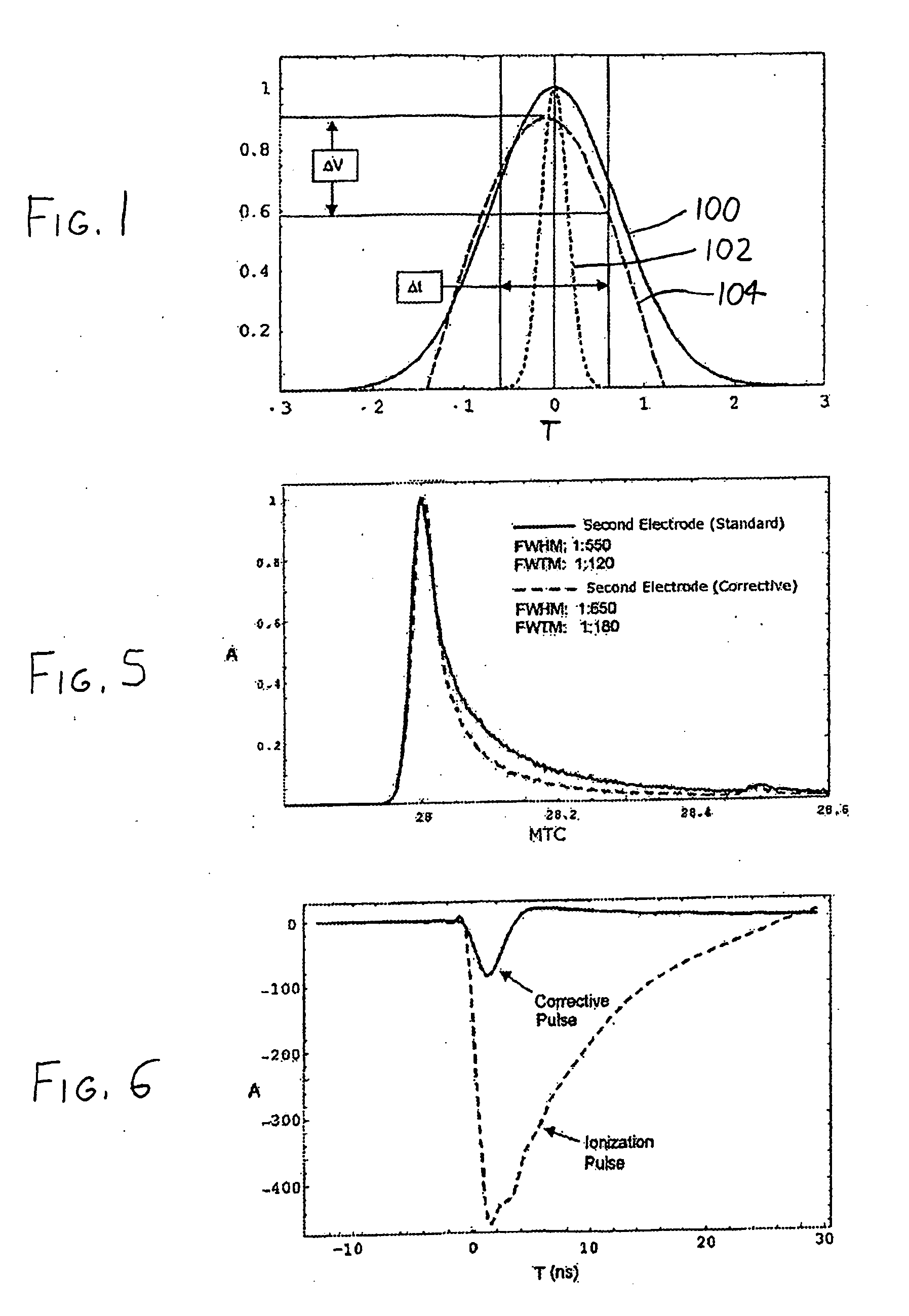Methods and devices for atom probe mass resolution enhancement
- Summary
- Abstract
- Description
- Claims
- Application Information
AI Technical Summary
Benefits of technology
Problems solved by technology
Method used
Image
Examples
Embodiment Construction
[0034]The invention provides an energy compensation arrangement for increasing the mass resolution in atom probes and other mass spectrometers which employ a pulsed ionization mechanism. Looking to the exemplary version of the invention depicted in FIG. 3A, a specimen 300 is shown in an atom probe chamber 302 spaced from a detector 304, with the specimen 300 being connected to a source 306 of standing voltage. A first counter electrode 310 is connected to an ionization pulser 312, and a second counter electrode 314 is situated adjacently to the first between the specimen 300 and detector 304, similar to the counter electrode ion deceleration arrangement discussed above and shown in FIGS. 2A-2C. However, the second counter electrode 314 also has a pulsed voltage applied to it, with the pulse being tailored to accelerate and / or decelerate the ions 308 passing it so as to reduce the variation in time of flight discussed previously with reference to FIG. 1. For example, in the preceding...
PUM
 Login to View More
Login to View More Abstract
Description
Claims
Application Information
 Login to View More
Login to View More - R&D
- Intellectual Property
- Life Sciences
- Materials
- Tech Scout
- Unparalleled Data Quality
- Higher Quality Content
- 60% Fewer Hallucinations
Browse by: Latest US Patents, China's latest patents, Technical Efficacy Thesaurus, Application Domain, Technology Topic, Popular Technical Reports.
© 2025 PatSnap. All rights reserved.Legal|Privacy policy|Modern Slavery Act Transparency Statement|Sitemap|About US| Contact US: help@patsnap.com



